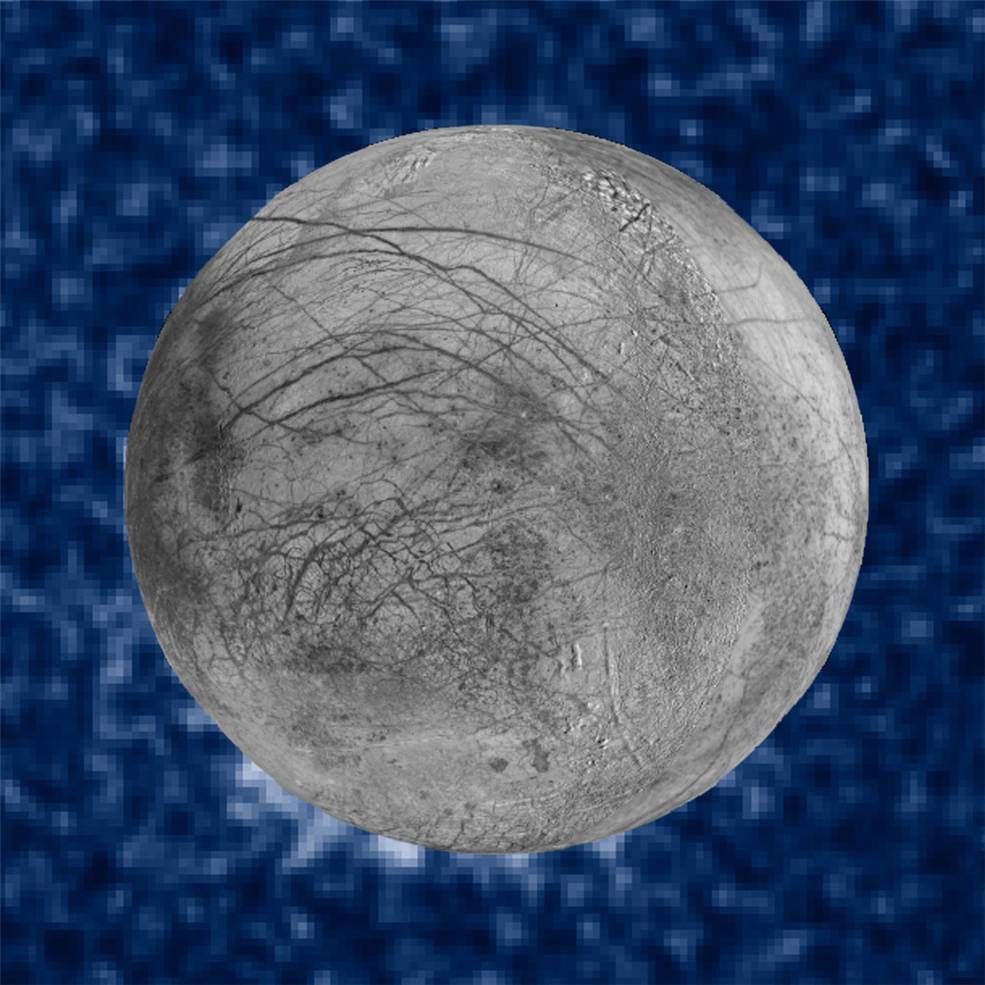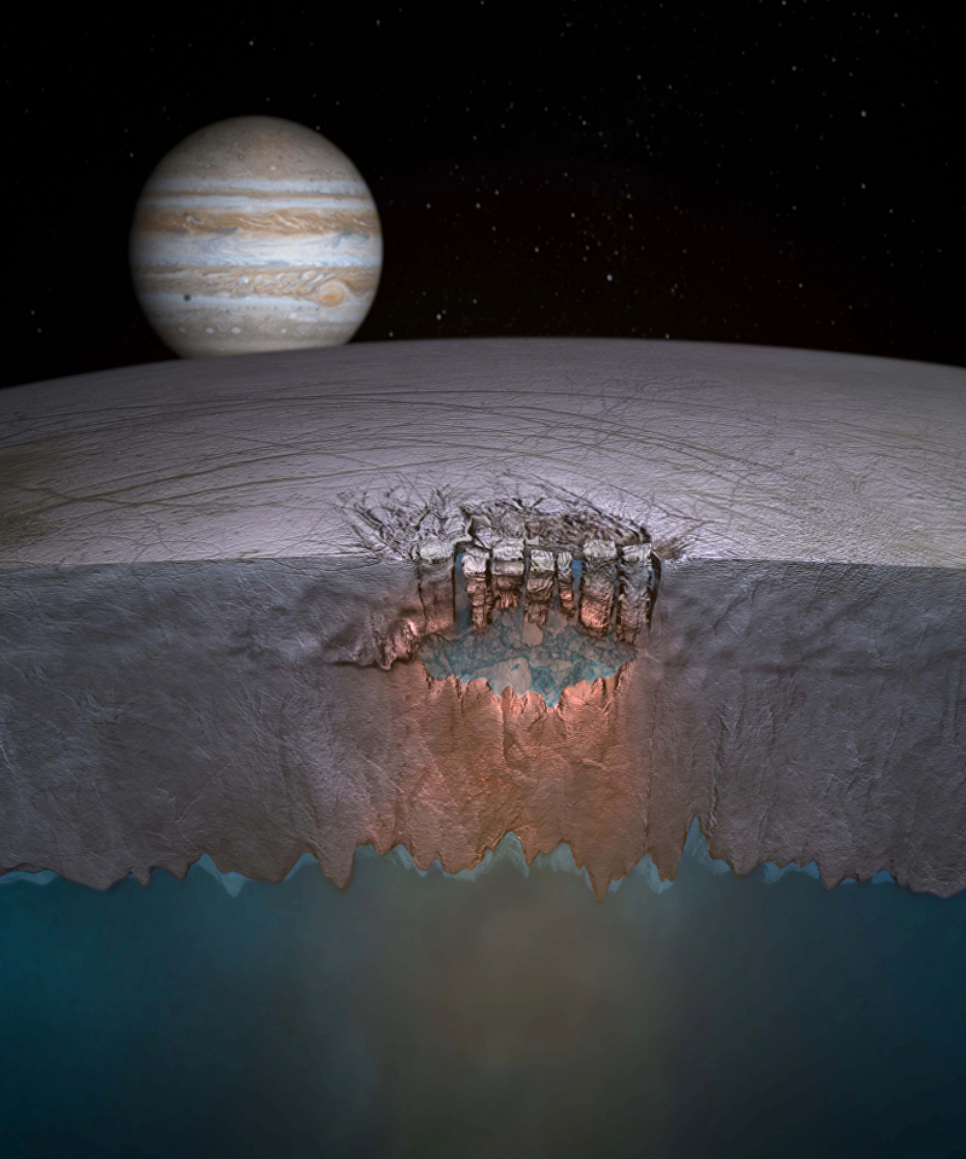Orbital Observatory Hubble had a unique photo of how on the surface of Europa, satellites of Jupiter, arise, and geysers erupt, scientists said at a press conference in the headquarters of NASA.
We have found new evidence that in Europe there are the geysers, the emissions of which fall into the space. Our new and previous observational evidence indicates that under the surface of this satellite of Jupiter there is the ocean of salt water ice, hidden from us under several kilometers of ice. The discovery of geysers suggests that we can explore its content by observing their emissions and try to understand whether there is in them life, ” said William sparks (William Sparks) from the Institute for space telescope in Baltimore (USA).
In Europe, one of the four largest satellites of Jupiter, Galileo is still open, under thick layer of ice there is an ocean of liquid water. Scientists believe Europa’s ocean one of the most likely havens of extraterrestrial life. In recent years astronomers have found that the ocean exchanges gases and minerals with ice on the surface and also confirmed the presence in it of substances necessary for the existence of germs.
As told by sparks, the first possible traces of the existence of geysers on Europa, was found back in 2012, when the American astronomer ROS Lorenz (Lorenz Roth) have found that UV photographs of Europe, obtained with the Hubble traces the unusual bright spots near the South pole of the planet. ROS and his team considered these spots are eruptions of geysers, rising to a height of 200 kilometers from the surface of Europe.
These observations attracted the attention of scientists from NASA, and they spent in 2014, several additional sessions of observations of Europe, watching over her in that moment, when the planet passed through the disk of Jupiter, against which the emissions of the geysers had to be particularly noticeable. Europe is one of the closest satellites to Jupiter, so it passes through the disk once every 3.5 days, which simplified observations.
In total, NASA has studied ten such passes in Europe. As noted by sparks, Hubble was able to see these traces in the ultraviolet and optical flares, potentially associated with the eruptions of the geysers, in three similar pictures. As in the case of observations of Dew, most of the outbreaks they were concentrated at the South pole of the planet, but in one of the photos, scientists have noticed possible signs of the existence of geysers in the vicinity of the equator of Europe.
While scientists are not ready to say that they found the geysers, since, according to sparks, the monitoring data are within the permissions and capabilities of Hubble. The launch of its successor telescope, the James Webb, will help to put an end to this issue.
If the geysers in Europe do exist, then their existence gives us the chance to examine the contents of the ocean on this moon of Jupiter, not plunging into it, including to evaluate its suitability for life. In addition to the emissions, surface of Europe, too, will be interesting to scientists, as it will be covered with eruptions, geysers and matter in its under-ice ocean.
Why geysers erupt on Europe’s relatively rare? Says Britney Schmidt Britney Schmidt from the University of Texas at Austin (USA), one of the participants of the open, the reason for this lies in the fact that the tidal forces generated by Jupiter and warming the bowels of Europe, not strong enough to consistently break her ice shield.
Geysers, as suggested by Schmidt back in 2011, there are in the original openings, which result from heating of the ice Europe under the action of tidal forces and the eruption of ice volcanoes. Such polynyas freeze very quickly, in tens of thousands or hundreds of thousands of years, and this may explain why geysers erupt in Europe very irregular.
According to Kurt Niebuhr (Kurt Niebuhr), Director of the upcoming mission, the Europa clipper, the potential discovery of geysers increases the interest in this planet, however, scientists need more data in order to understand how dangerous are these geysers for the probe and how they can be explored. He therefore suggested to wait for the launch of James Webb in order to understand whether or not to install the tools for collecting water and ice for a Europa clipper or not.
















